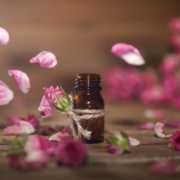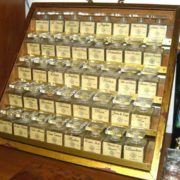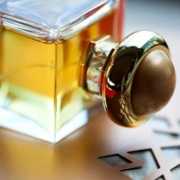Iris Perfume – Properties, Distillation, and History

Iris perfume, also known as orris perfume, is among the most loved perfume notes for both men as well as women. Iris perfumes are made from iris butter, which is one of those legendary perfumery substances in the world – exclusively beautiful and extraordinarily expensive.
Let’s have an in-depth look into the properties, distillation (to be precise extraction), and history of Iris perfume to understand why it is so expensive.
Table of contents
-
Properties
-
Distillation
-
History
-
What does iris smell like?
-
Which iris is used in perfumes?
-
Why is iris so expensive?
-
Final words
Properties
Iris perfume is made from the bulbed roots of the orris plant that have remarkable healing properties and have been used for centuries in beauty and wellness compositions. Iris fragrance can impact emotions, and hence can be used in several emotional conditions as well.
Here’re some of the most common beauty and health benefits of orris roots.
- Orris root has significant skin cleaning properties, making it helpful in treating skin infections.
- The moisturizing properties of the iris root help to reduce the dryness and itchiness of the skin.
- It helps the skin retain elasticity and glow.
- It has anti-aging actions on the skin.
- Orris root has blood purifying properties.
- It has gland-stimulating actions.
- It can improve the function of the digestive and excretory systems.
- It shows tremendous antiseptic actions on cuts, burns, and scars.
- Iris root has great anti-inflammatory actions, hence used in bronchial inflammations.
- It is very helpful in baby’s teething and is widely used in traditional medicines to keep babies healthy.
- Orris root is used in treating cancers in many cultures.
- It can enhance the functionality of the nervous system, hence used in improving emotional balance.
- Iris root helps to maintain acid-alkali balance in the body.
- It may help to lose weight naturally.
- It helps to reduce pain and swelling in arthritis.
- It helps to reduce the risk of developing cardiac issues such as ischemia.
Distillation
The iris roots that have been aged at least 3 years are used to produce:
- iris absolute,
- iris concrete,
- iris resinoid.
The aged powdered orris roots are used as a fixative in natural perfumes.
The first step for isolating the essence of iris roots is crushing and grinding the roots to minimize the particle size and to break down some of the cell walls of oil-containing glands. Solvent extraction is by far the most important and common process to produce iris root absolute.
With solvent extraction, crushed orris roots are placed into a rotating drum and then coated with any type of solvents such as petroleum or benzene. The solvent then dissolves the essence of the roots, leaving behind a waxy material bearing the oils.
The waxy material is then collected and dissolved in ethyl alcohol. The alcohol then burned off and produces perfume oil. Orris absolute is described to have a very rare delicate, sweet floral, and woody smell, making it the most expensive substance in natural perfumery.
Iris concrete is made by steam distillation from the ground iris roots that have been aged 3 to 6 years. Though it is technically not concrete as it is produced using steam distillation, rather it is so-called due to its solid consistency.
Iris resin is extracted using a solvent such as an ethyl alcohol from the aged roots, which is technically real concrete. Due to its thick and semi-fluid consistency, it is called iris resin.
Like other precious natural essences, the odor of the iris gets better with the passage of time.
History
The use of orris as a scented ingredient dates back to the Renaissance with the queen of France Catherine de Medici. At the time, people used to crush the iris roots and mix them with rice powder after sieving for the sweet violet scent. Perhaps for this reason the iris notes are often described as powdery notes.
The rice powder scented using iris powder was used for clothes, face, and also importantly to perfume wigs. In the early 20th century, the perfume industry prospered and used this precious ingredient in a large number of elegant fragrances, majorly called iris fragrances.
What does iris smell like?
The actual smell of iris is necessarily not possible to describe in words. Like other noble essences, its smell quite matches to animal pheromones, sometimes similar to the scents of a newly born baby’s head.
Iris is both floral and woody, with evocative notes of violet. Also described as smelling of raspberry with a warm peppery quality, which lends a chocolate effect to the fragrance.
Iris is also “metallic” and “cool” with a combination of woody-earthy and sweet-floral, which smells fresh, delicately floral, and vaguely medicinal. The sensual animal notes of iris are often found in the original animal musk.
Which iris is used in perfumes?
To produce fine quality iris fragrances, only one species is used in perfumes, Iris pallida. Since freshly harvested orris roots do not hold the characteristics of iris scents, they are used in perfumes only after have been aged over 3 years.
Why is iris so expensive?
The roots of Iris plants are carefully kept on the field for 4 to 5 years or more to develop the bulbs and then it takes another 3 to 6 years to dry the root bulbs before the actual distillation process. Only 2% of dried roots transform into iris butter.
To produce a single kg of iris essence, 500 kg of root bulbs are required. All of these reasons exponentially increase the price. The market price of pure iris butter may reach up to 100,000 Euros a kg. The amount is typically justified by the time and efforts required for its complete processing. The long waiting is worth well.
Final words
Iris is believed an olfactory treasure in the world of natural perfumes. When you consider the time and effort it takes to process, you will definitely agree with the cost. However, if you haven’t tried the bewitching scents of natural iris perfumes, you should obviously consider trying them to experience the inexpressible majesty of iris.
























Leave a Reply
Want to join the discussion?Feel free to contribute!